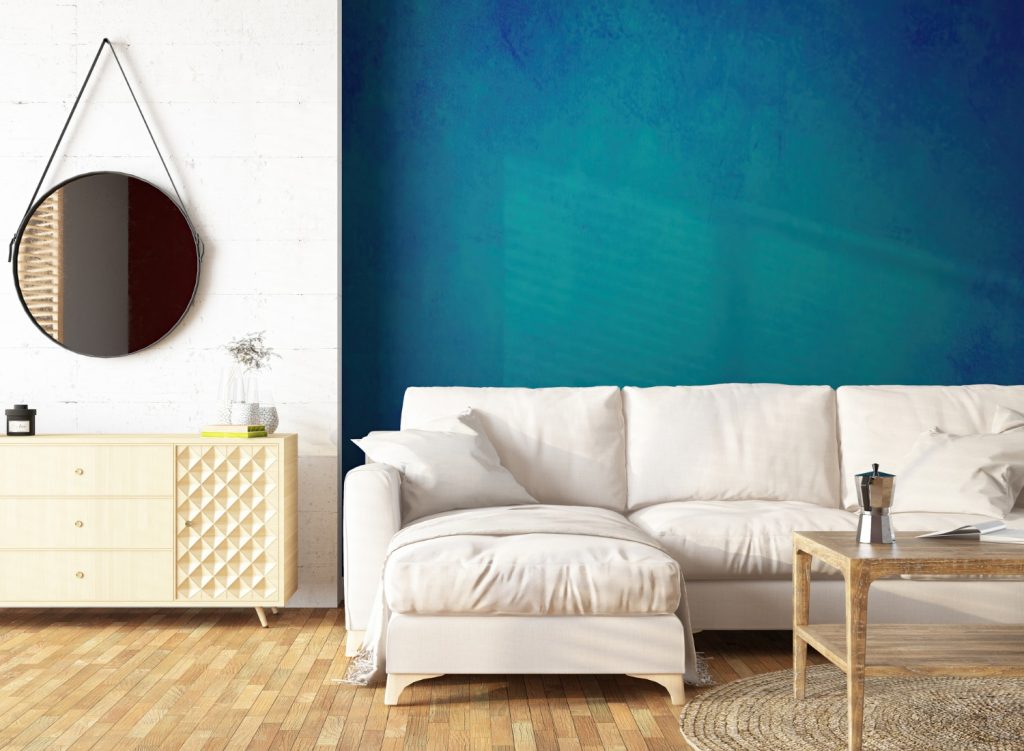Living Room Accent Wall: The Dos and Don’ts According to Designers

Your living room is not just another space in your home—it’s the canvas where you express your style, entertain guests, and find solace. Adding an accent wall to your living room can elevate its design to a whole new level. It’s an opportunity to create a focal point that draws the eye and adds a dynamic dimension to the room. However, the success of a living room accent wall relies on understanding the dos and don’ts of design.
In this comprehensive guide, we’ll delve into the invaluable advice provided by interior designers to help you create a living room accent wall that enhances your space, reflects your unique style, and elevates the overall aesthetics of your home. Whether you’re considering a bold color, striking patterns, or functional elements, these expert tips will ensure your living room accent wall strikes the perfect balance between form and function.
The Dos
Choose the Right Wall
Select the wall that naturally draws the eye when you enter the room. Typically, this is the wall opposite the entryway or the one behind the largest piece of furniture, like a sectional sofa.
Select the Perfect Color
Opt for a color that complements your existing decor while adding contrast and visual interest. Earthy tones, muted shades, and bold jewel tones are popular choices.
Experiment with Patterns
Consider using paint techniques, wallpaper, or decals to create patterns or textures. Chevron, herringbone, or geometric patterns can add depth and dimension to your living room.
Make It Functional
Incorporate functionality into your accent wall. This could mean mounting shelves, a media center, or a cozy fireplace. A functional accent wall not only looks good but serves a purpose.
Showcase Art and Decor
Your accent wall is an ideal backdrop for art and decor. Hang your favorite paintings, photographs, or a gallery wall to personalize the space.
The Don’ts
Avoid Overstimulation
While bold patterns and vibrant colors can be enticing, avoid overwhelming the space. Your accent wall should enhance, not overpower, the room’s ambiance.
Steer Clear of Clutter
Refrain from overcrowding your accent wall with too many decorations or knick-knacks. Minimalism often works best.
Say No to Random Placement
Ensure the elements on your accent wall have a purpose and connection to the overall room design. Random placement can create visual chaos.
Don’t Ignore Lighting
Poor lighting can make your accent wall fade into the background. Use adequate lighting to highlight your wall’s features and decorations.
Avoid Clashing Styles
Maintain consistency with the room’s overall style. Your accent wall should complement the existing decor, not clash with it.
Expert Tips
When it comes to designing a living room accent wall, a few key considerations can make a significant difference. Firstly, texture matters, and incorporating materials like shiplap, reclaimed wood, or stone can add depth and character to the wall.
Strategic lighting, such as sconces or picture lights, plays a crucial role in accentuating the wall and its features, bringing them to the forefront. For a more subtle effect, consider opting for a shade slightly darker or lighter than the room’s main color.
If you’re not ready for a long-term commitment to a design, temporary options like removable wallpaper or decals offer a solution. Lastly, mirrors can work like magic by amplifying the room’s natural light and creating a sense of openness and airiness.
Final Note
Your living room’s accent wall has the power to transform the entire space when done right. By adhering to the dos and don’ts provided by experienced designers, you can ensure that your accent wall becomes a harmonious and eye-catching element that enriches your living room. Whether you choose a bold color, an interesting pattern, or a functional feature, the key is to maintain a sense of balance, complement your overall design, and enhance the room’s aesthetic appeal.
Decades of Combined Expertise
Best Buy Guidebook is a culmination of online publishing lessons learned. From SEO to paid ads, our team has experienced the highest of highs and the lowest of lows. Our goal now is simple: Arm readers with the most information possible.
